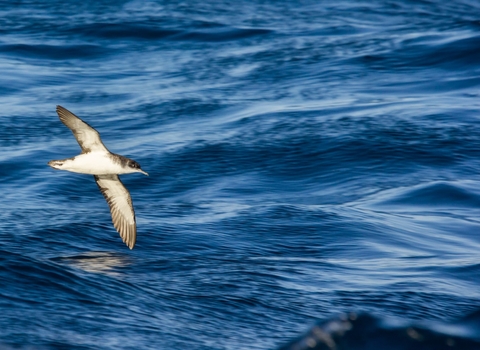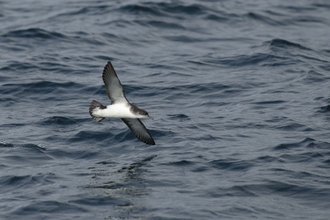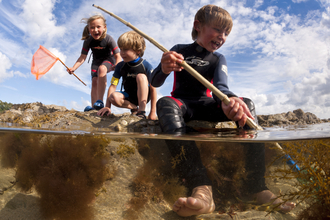Manx shearwater
Black above and white below, these superb fliers are related to the majestic albatross. Manx shearwaters make an extraordinary journey across the Atlantic from the coast of South America to nest on the off-shore islands along our western coast from March to August. At night, thousands of Manx shearwaters gather offshore in large rafts: wails, howls, and screams building as they make their way ashore in the dark. Glimpse white underwings under gentle torch light as thousands of Manxies search the island for their burrows.
Let your spirits soar with the incredible sound of Manx shearwaters calling through a wild night
Where to see the Manx shearwater
During the summer, you can stay overnight on both islands of Skomer and Skokholm, off the Pembrokeshire coast. As well as the Manx shearwaters, the islands are home to thousands of other seabirds, including 6000 pairs of puffins, as well as grey seals.
In August, accompany the Wardens on Skokholm Island as they measure and weigh the rarely seen (and incredibly cute) storm petrel and Manx shearwater chicks. Learn about their amazing homing instinct, predators, and incredible journey once they leave the safety of the burrow. Please note that there are no day trips to Skokholm island - only short breaks are available.
You can also spot Manx shearwaters on the Isles of Scilly. Numbers breeding across the Islands are increasing and they are regularly seen during daytime Wildlife Safaris (at sea) and heard calling at night (particularly if staying on St Agnes campsite as they have nesting burrows nearby).
What to look for
The Manx shearwater is a relatively small seabird, similar in size to a collared dove but with a wingspan of up to 90cm. Their distinctive flight pattern and stiff wings lend them their name as they use the air currents passing just above the surface of the waves to ‘shear’, with barely a wind beat to propel them. Despite their incredible agility in the sky, on land they are slow and easily caught by gulls, so they only venture to their burrows on the shore under cover of darkness.
If you can't get to one of these places
Manx shearwaters can be seen migrating past our coastline during the late summer. If you can't make it, you can still listen to the noises of the Skomer colony at night in this very atmospheric recording from The Wildlife Trust of South and West Wales.
More wildlife experiences
From seeing colourful wildflowers to spotting magnificent birds of prey, we can help you get closer to wildlife across the UK.









